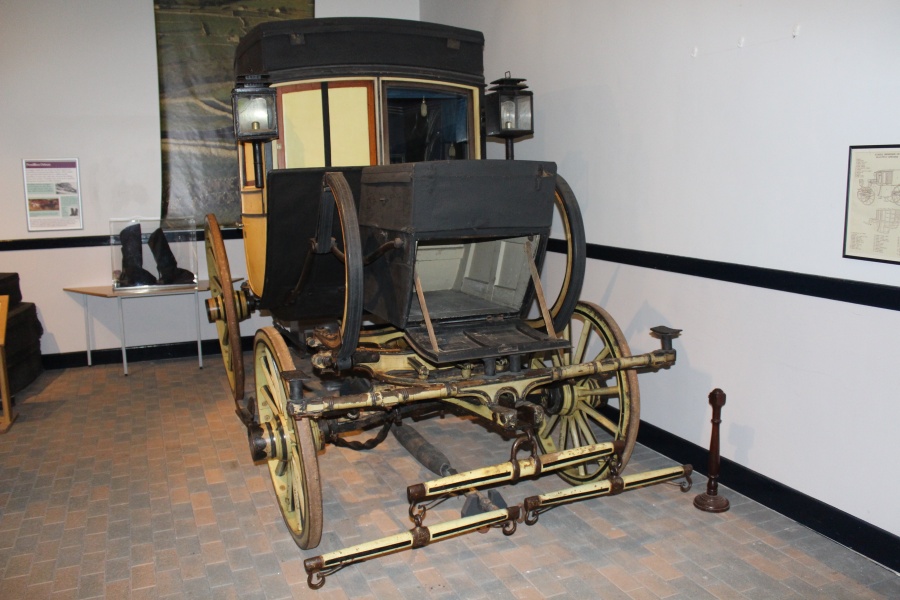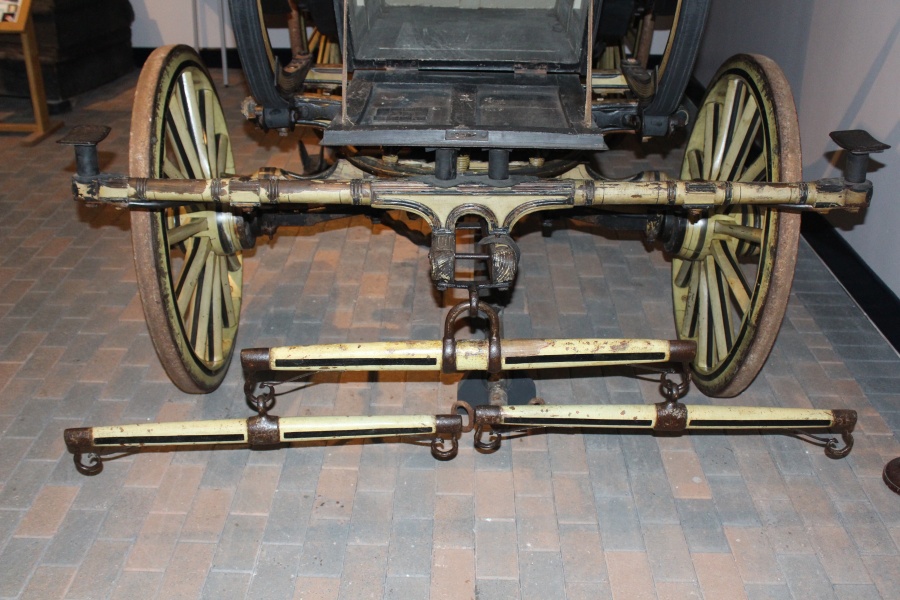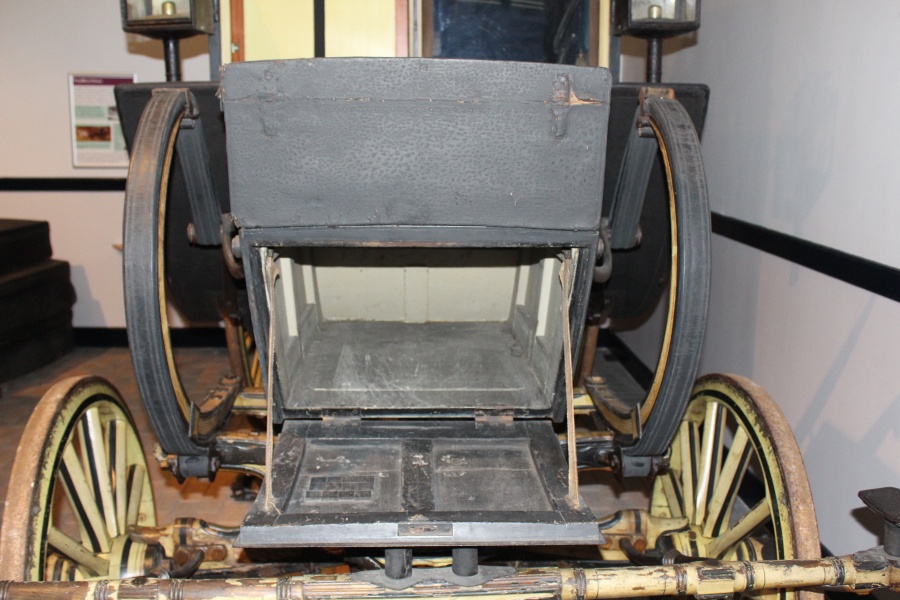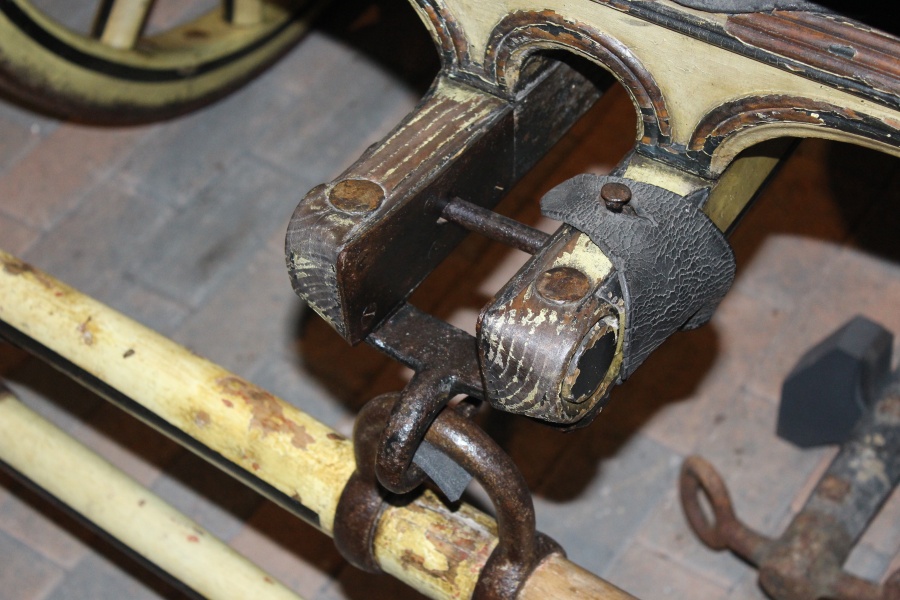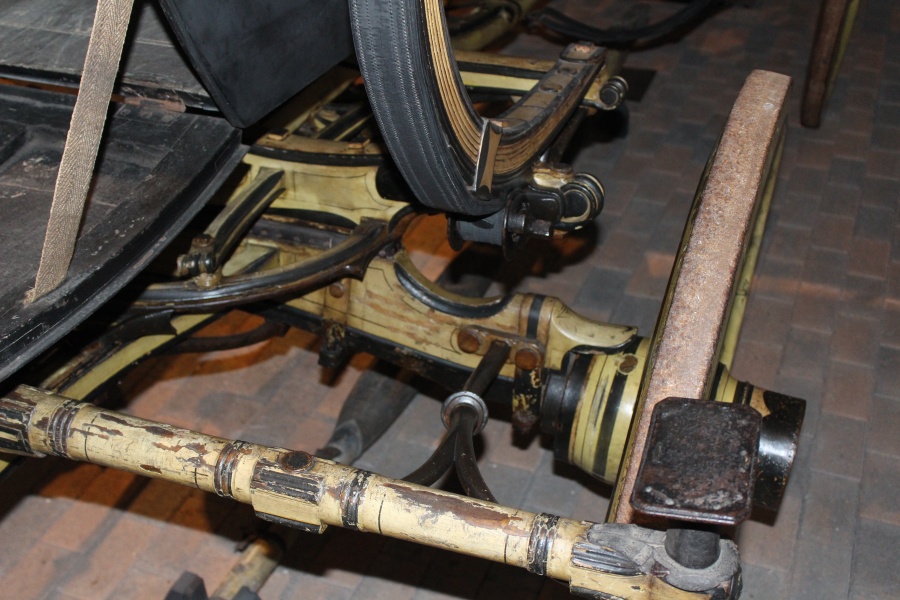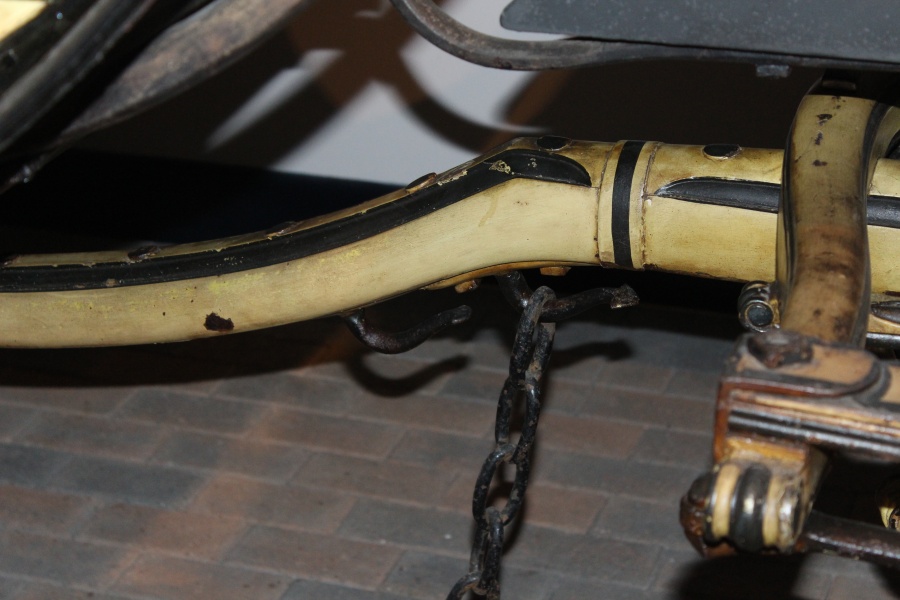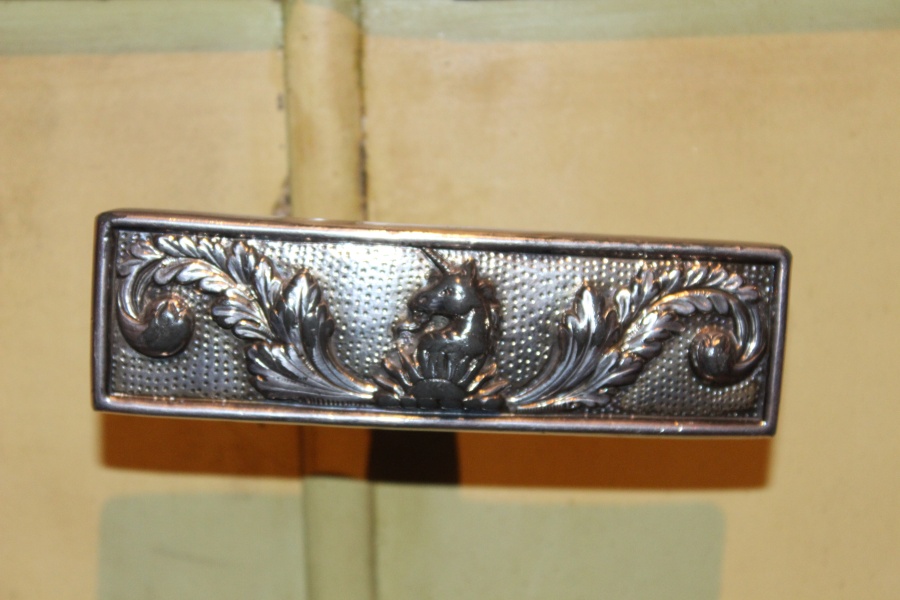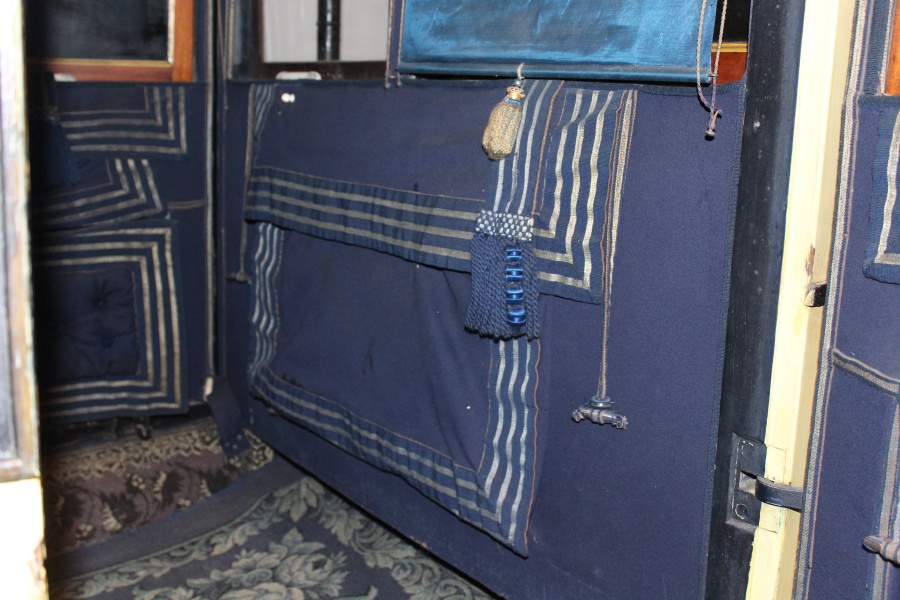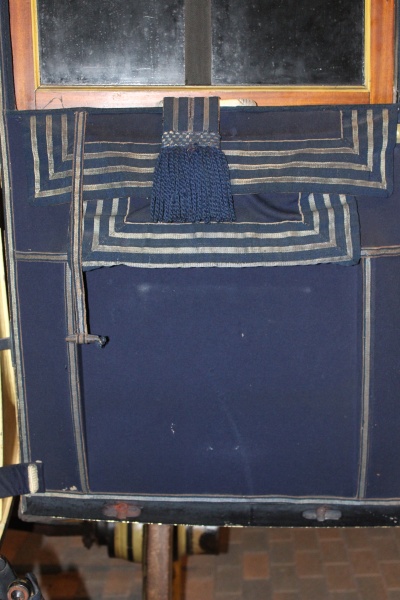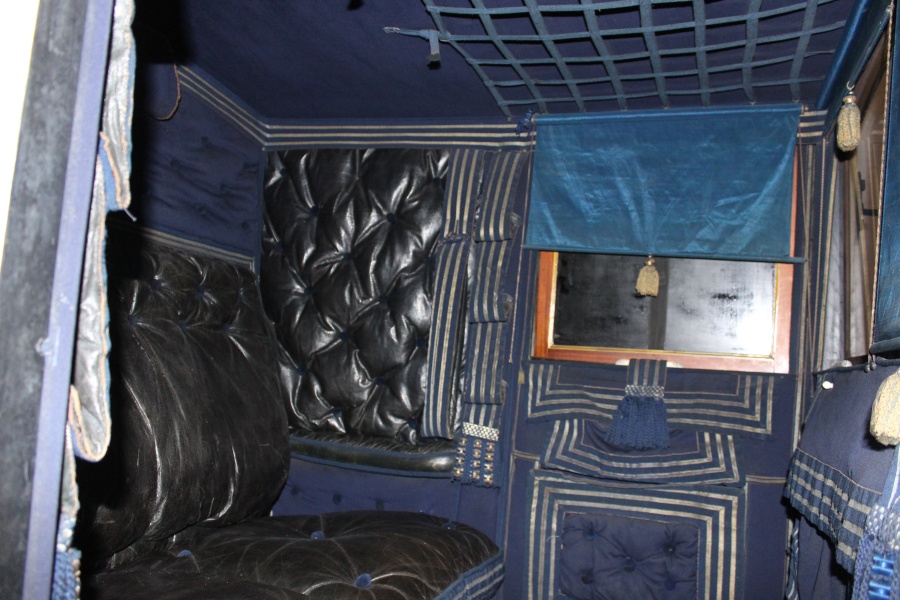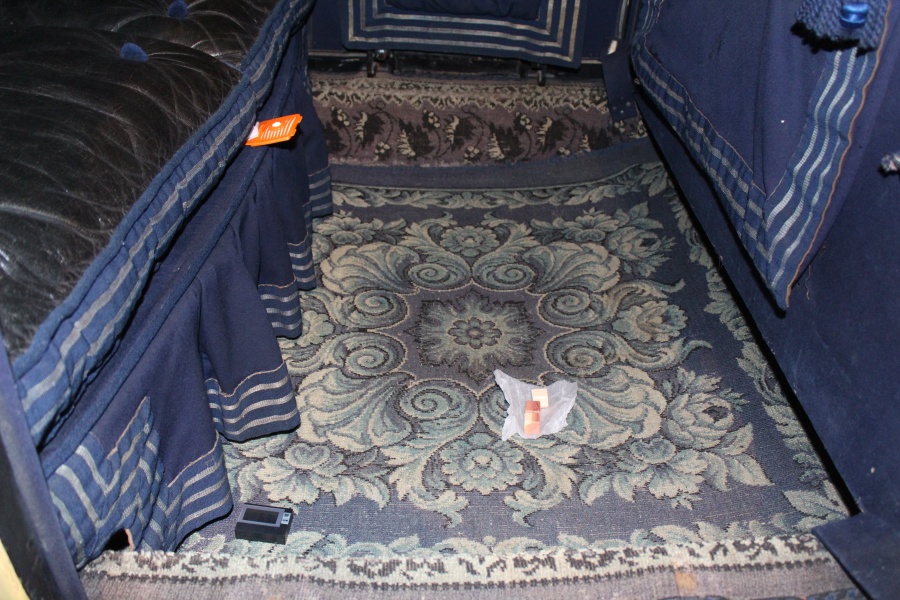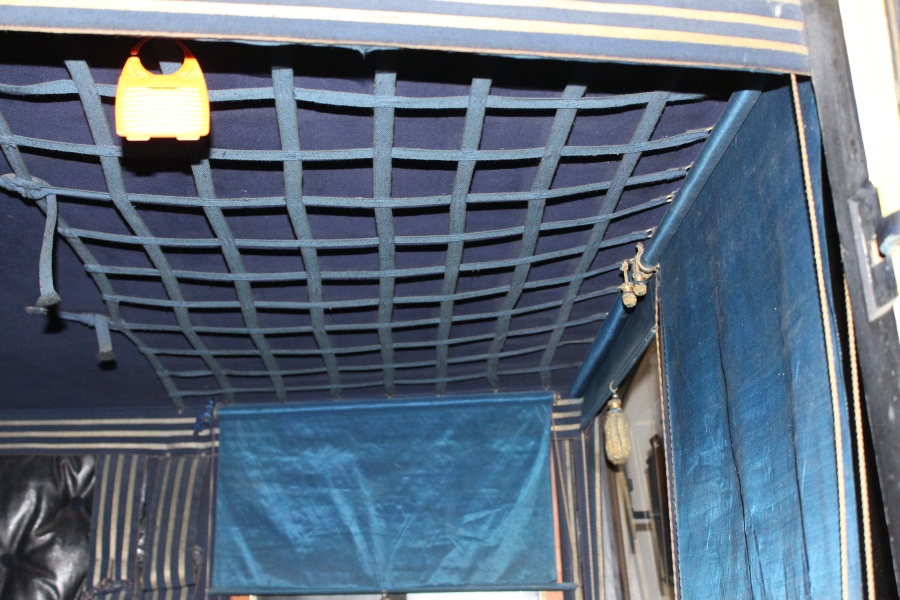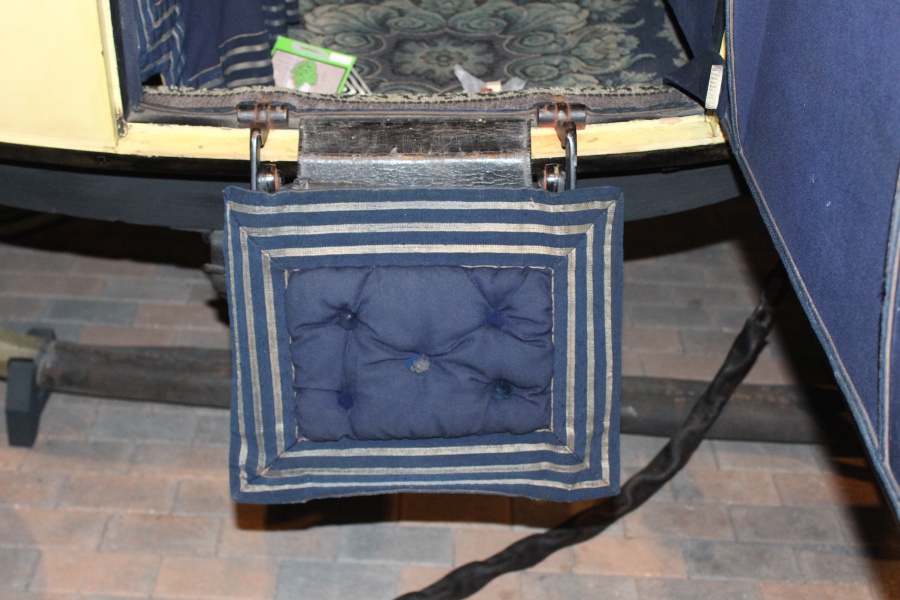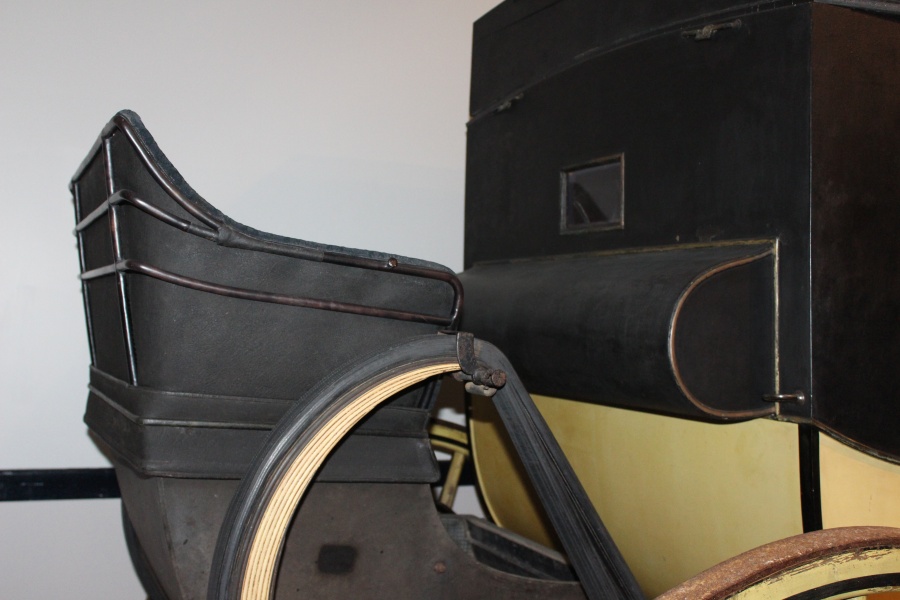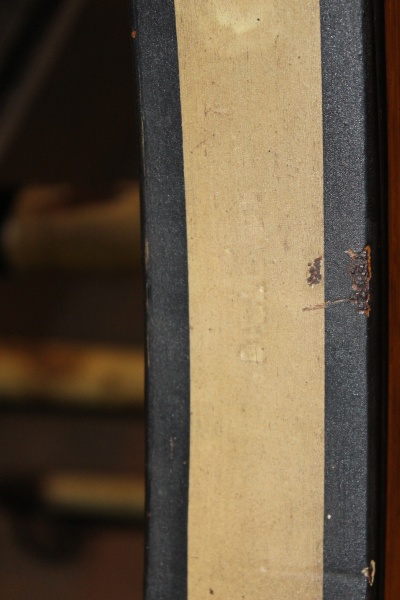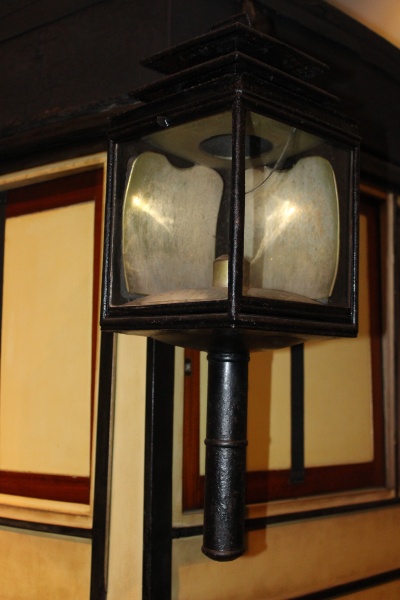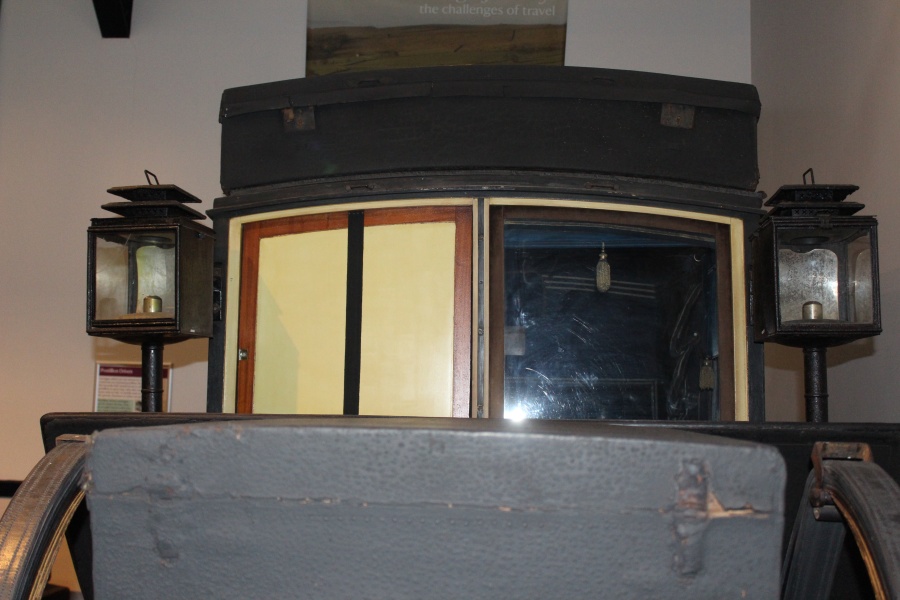Use the dots above to scroll through images.
Listed in 1 collection
Listed at 1 museum
Listed for 1 maker
Quick Details
Carriage Type
Travelling Chariot
Date of Production
pre 1812
Accession or Inventory Number
ARL/CM/W/29
Materials used
Paint, Wood, Iron, Leather, Wool Box Cloth, Bone, Silver, Brass, SilkSummary of Travelling Chariot
This carriage dates from the early 1800's and was donated by Colonel Antrobus. It is believed that his ancestor, Gibbs Crawfurd Antrobus, used this travelling chariot in his career as a diplomat which took him through Europe at a time of political change. As a junior secretary under Lord Castlereagh he attended the Congress of Vienna (1814-15) that marked the end of the Napoleonic War. In 1824 he was created Envoy Extraordinary and Minister Plenipotentiary for George IV to the Kingdom of the Two Sicilies, which was governed from Naples. His official accreditation, signed by the King, with the royal seal attached, was his letter of authority. A silver case mounted with the royal arms protects the seal. As part of his official uniform he wore a dress sword, and there is a sword case at the back of the body in which it would have been carried. The carriage has its original imperials (light wooden cases covered in leather) carried on the roof and, in this case, also on the front boot. On long journeys it would be pulled by pairs or teams of post horses hired at inns along the way, ridden by post boys who would then hack the horses back from the next post. The horses were changed every 10-12 miles. It could seat two passengers inside and two servants in the rumble seat on the hind boot. It would be postillion-driven for travelling and, by fitting a coachman’s seat; it could be converted for town use, when a coachman would have driven it.
Dimensions
Height: 7ft3 ¾”
Length: 13ft6”
Width: 6ft ¼”
Full description
One of the best surviving examples of Travelling Chariots due to its original condition and having retained its leather covered roof and boot imperials. It also has a marvellous history.
This is a classic example of a Travelling Chariot that could be used for long distance journeys and for town use as the rumble seat at the back can be removed and a coachman’s seat can be added to the front. On the roof are two leather covered imperials which are shaped to fit the curve of the roof allowing rain water to run off easily. The roof, upper side and upper rear panels are covered with leather. Also in leather is a sweeping dashboard at the front, unlike the Anglesey Travelling Chariot, also at Arlington Court, this carriage does not have a dormeuse boot, allowing more space for luggage to be stowed in front of the body of the carriage. A sword case is fitted in the back panel, accessible from the inside. Brass beaded edges the body panels and sword case.
The doors are hung on concealed hinges which is an unusual feature for a carriage of this date as they would usually be on butt hinges. They can be locked from the outside with budget locks and there are brass bolts on the inside. T bar silver plate handles add the only adornment to this carriage with a design of acanthus leaves incorporating the Antrobus family crest. They are very fine. Each door has a lowering window with frames covered in brown velvet and lowering shutters that are painted black on the inside, yellow on the outside and have varnished frames. There are two further windows at the front with lowering windows and shutters and a small rectangular window in the rear panel.
At each door, folding inside, are double folding steps served with leather, blue wool box cloth and blue broadlace with a striped design. There are no actual steps at the front to mount the Coachman’s seat when it is in place, but the wheel stocks are jagged as are the tops of the outer roller bolts on the splinter bar. At the back are two rectangular jagged plate steps mounted on the nearside spring bed to access the rumble seat.
In front of the dashboard is a boot which has a hinged door at the front which drops down,supported on leather (?) straps. The curved dumb irons, which are supported on huge C springs, have extensions that are bolted to the side of the boot. On top of the boot is another leather covered imperial which echoes the shape of the boot. At the back is a removable rumble seat for a valet and a lady’s maid, a space for their luggage is under the seat. The seat is covered with black leather on the outside and buttoned blue wool cloth on the inside. It has a seat rail with double rails on the sides and triple at the back. Little knobs on the rail indicate that a leather apron would have been attached. And some of the leather serving to the rails survives in situ.
The close futchell fore carriage is rather nicely carved with circular pattern fiddle ends. The splinter bar is turned and finished with reed carving along the edges. Currently hanging on the futchells are the main bar and swingletrees for a team of horses. A leather served, cranked pole is displayed underneath the Chariot, it does not have a crab end for the attachment of the bars, so there must have been a second pole. The hind carriage is also carved with the same details.
The perch is compassed down to follow the line of the underside of the Chariot. A drag shoe hook is on the underside of the perch with a leather served drags shoe chain hooked on to it. The hook for hanging the shoe itself is missing and so it sits on the floor. At the back in the perch is an eye bolt for a drag staff for use on the hills negotiated on the Grand Tour of Europe, the staff itself is missing.
At the front are 12 spoke English pattern wheels and at the rear 14 spoke wheels. They are shod with iron tyres.
Square lamps with two tier square chimneys sit in brackets bolted to the front corner edge of the carriage body. The lamps can be lifted out of the brackets and turned through 180 degrees to prevent the glasses from being damaged when not in use. The metal elements of the lamps are painted black.
The Antrobus Chariot retains its original paintwork. The roof, upper body panels, underside of the floor and the boots are painted black with the lower body panels, wheels and under carriage being a lovely pale yellow with black lining. On the door panel is the Antrobus crest with the motto‘Dei memor gratus amcis’, Mindful of God, Grateful to Friends.
The interior is kitted out for travel with the seat cushion, seat back, side panels and arm rests being covered in black buttoned leather. The buttons are of blue silk and the seaming lace is blue worsted. Around the edge of the seat cushion is a wide broadlace with a regular stripe of light and darker blue. In places the lighter blue has faded to gold, which actually looks rather attractive. The lower side panels, rear panel, front panel, seat valance and door linings are of blue buttoned box cloth all edged with the striped broadlace. Blue silk roller blinds hang at the windows with tassels now faded to gold from presumably blue. The hand holders are backed with black leather and have a fringe that incorporates three strings of turned wood hangers covered with royal blue floss silk. On the roof is a blue webbing net for the stowage of belongings such as hats.
There are two designs of carpet in this carriage. On the step treads the carpet has a vine leaf design and now appears in shades grey but was presumably blue. A stylised foliate design covers the floor carpet in different shades of blue.
The internal furniture is made of carved bone, beautifully finished.
Inscriptions
Stamped on the locking stop bolted to the futchells: B.CLOVER
Stamped on flange of axle caps and on back spigot of axle boxes: 1846
Stamped on all axle arms: BASSONO & FISHER – ALBION WORKS, BIRMINGHAM
Stamped on the inside of base of the lamps: MANUFACTURED BY B.BLACK PATENTEE SOUTHAMPTONST GROSVENOR SQR LONDON
Stamped on the C Springs: Illegible makers name
Access information
This Traveling Chariot is in the care of The National Trusts Arlington Court
Arlington Court
Arlington
Nr Barnstable
Devon
EX31 4LP
https://www.nationaltrust.org.uk/arlington-court-and-the-national-trust-carriage-museum
Picture credit
The National Trust / Amy Bracey / Robert Lovell

 Carriage Foundation
Carriage Foundation